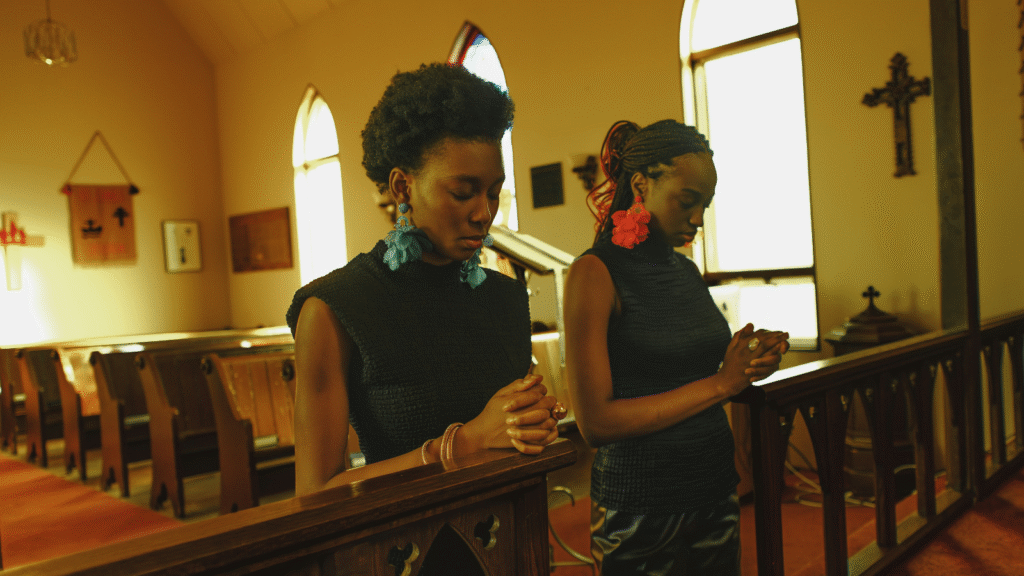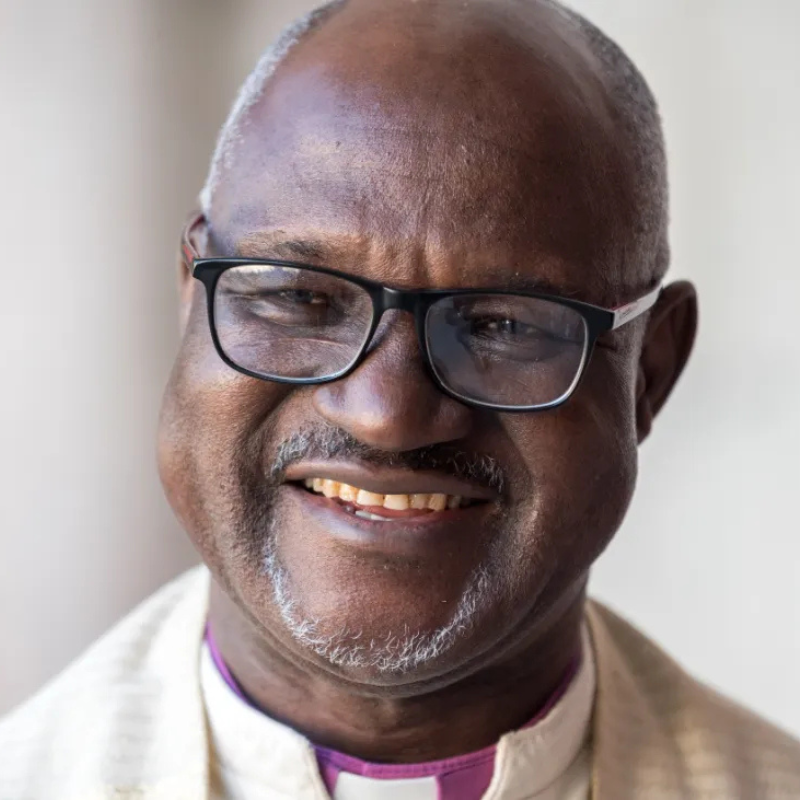The author shared these remarks at Luther Seminary, St. Paul, Minnesota, on Oct. 1, 2025.
Does the Church have a future? And what might that future look like? What lessons can churches in the Global North learn from those in the Global South—Africa in particular? These are questions increasingly asked within the life of the Church, especially in Europe and North America, often with a sense of anxiety.
The global picture of the Church today is complex. While traditional churches in Europe and North America face numerical decline, especially in terms of active attendance, churches in Africa, Asia, and Latin America continue to grow, reshaping Christian identity and practice. Regions once regarded as “mission fields” express vitality and leadership, alongside the rise of Pentecostal movements, which are also expanding in the North. This raises an important question: what does this mean for the future of the Church?
In every generation, Martin Luther reminded us, the Church is always in need of reform—ecclesia semper reformanda. Today, the witness of the Global South offers not only numerical strength but also fresh theological insights and new approaches to discipleship that challenge and renew the whole body of Christ.
This is not merely an abstract observation. Through my more than two decades of work with member churches of the Lutheran World Federation, I have seen churches in the North—once central in shaping society and global Christian witness—remain faithful, yet face new realities: shrinking membership, rising secularism, and nationalist movements that turn societies inward. At the same time, communities in fragile, conflict-torn, or resource-scarce contexts are pioneering holistic mission and living faith in ways that speak powerfully to the global Church.
Both realities remind us that the Church is alive, and the Spirit is not bound by decline or growth. God works through both weakness and hope, reforming the Church everywhere. As Paul assures us: “My grace is sufficient for you, for my power is made perfect in weakness” (2 Corinthians 12:9).
God has neither withdrawn from history—on the contrary, God entered it in Jesus Christ—nor has God’s mission been completed, because God’s mission is ongoing, and the call to participate in it continues. There may be reasons for concern, but there is no reason for despair. Above all, there are countless reasons for hope: God is at work in this world, calling people and drawing the whole Church into mission.
The Pilgrim Movement of Christianity
Christianity has always been on the move—from Jerusalem to Europe, across the Atlantic, and now increasingly to Africa, Asia, and Latin America. Research, for example by the Pew Research Center, shows that while churches in many parts of the Global South continue to grow and bring fresh expressions of faith, those in the Global North often face decline, secularization, and shifting identities. Taken together, these realities remind us that the Church is being reshaped across the world and invite us to listen, learn, and walk together in faith.
In my encounters with churches in Europe and North America, I am often asked about the “secret” behind the growth of the Church in the Global South. I hesitate to give a full explanation, because it is not the product of strategy or human skill, but the work of God’s Spirit. Jesus says it best: “The wind blows wherever it pleases” (John 3:8). For Lutherans this is a vital reminder that it is the Holy Spirit who creates faith, gathers the people of God, and sustains the Church. The Evangelical Lutheran Church in America, in its statement of faith This We Believe (1991), affirms that through the Gospel, the sacraments, and acts of forgiveness and care, God gives the Holy Spirit to create faith and nurture the community of believers. We do not control the Spirit; we receive it as a gift.
Today, churches in Africa, Asia, and Latin America offer the wider body of Christ a living witness: vibrant worship, courageous faith under hardship, deep community care, and a bold missionary spirit. These are signs of the Spirit’s renewing work. This movement is not merely geographic—it is theological. God often works not through triumph but through weakness and suffering, the heart of Luther’s theology of the cross (Small Catechism, 1529; Heidelberg Disputation, 1518).
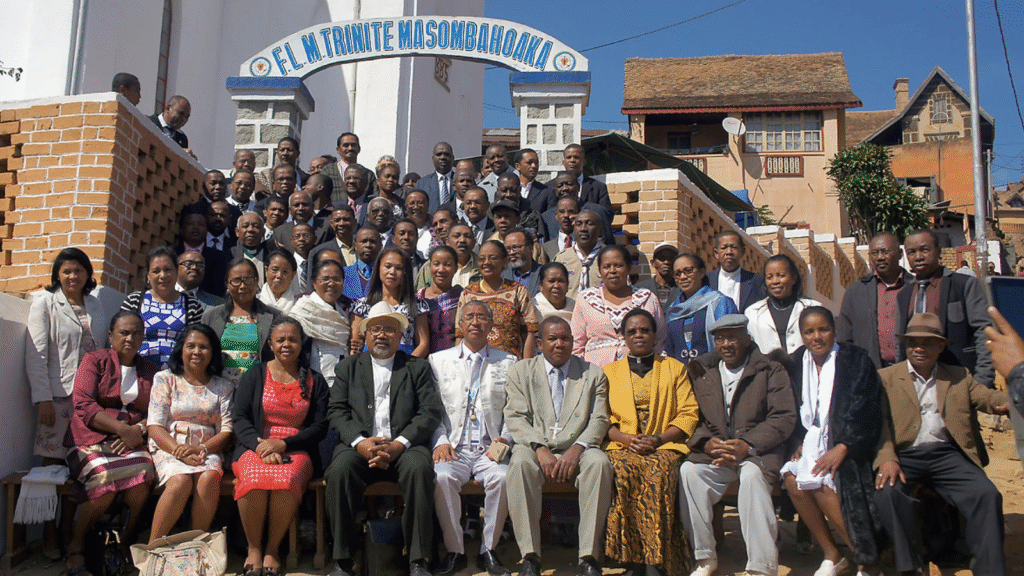
If this pilgrim movement teaches us anything, it is that the vitality of the Church is never determined by geography, wealth, power, or even size. God does not measure a church by numbers but by faithfulness and witness. Even numerically small churches can be mighty in impact—a lesson evident in the life of the Lutheran World Federation. We see very tiny churches in difficult situations yet standing out in their public witness [Angola].
This connects deeply with the theology of the cross: what impresses us—big numbers, power, influence—are often not what matters most in God’s sight. Scripture repeatedly shows that God looks instead at transformation, at the Spirit’s work in hearts and communities, at the reign of God breaking into the world. That work is often small, like a mustard seed. I dare say, God might even be wary of large numbers—for it was a crowd that cried, “Crucify him!” against God’s own Son.
Ultimately, God measures the Church by how the Gospel is received, confessed, lived, and carried daily in each context by the Spirit. The question before us, then, is: what lessons can we draw from this pilgrimage, especially in light of developments in the Global South today?
Key Lessons from the Global South
The lessons from the Global South are not abstract theories but lived realities. They emerge from churches that struggle to follow Christ amid both challenges and vitality. Taken together, these lessons do not merely describe “what is happening” elsewhere; they reveal how the Spirit continues to renew the one, global Church.
Community as the Body of Christ
Faith flourishes not in isolation, but in the life and fellowship of God’s people. Yet in much of today’s world, individualistic tendencies are on the rise. At the same time, there is a deep longing for belonging and authentic community. The Church offers a vital space to heal that longing and nurture that belonging—a place both theologically and socially fitting.
One of the deepest insights from the Global South concerns community. African wisdom, expressed through Ubuntu—“I am because we are”—reminds us that faith is shared and sustained in relationships. This resonates strongly with the Lutheran vision of the Body of Christ and the priesthood of all believers. It also expands our understanding of holistic mission, which includes proclamation, diaconal service, and advocacy for justice.
Leaders like Gudina Tumsa, former General Secretary of the Ethiopian Evangelical Church Mekane Yesus, emphasized that separating spiritual and social life fails to reflect God’s holistic vision. Faith and mission are inseparable from community life. This reminds us that we are called to bring faith courageously into every part of life, discovering ministry and identity together through Word and Sacrament, in community.
The Church’s task is to nurture values that unite people in faith, transform lives through Christ’s love, and seek to transform barriers to genuine fellowship.
Holistic Mission in Action
A vital lesson from the Global South is the vision of holistic mission, integrating proclamation, diakonia, and advocacy. Churches not only proclaim Christ crucified and risen but also operate ministries such as schools, hospitals, and peacebuilding programs. Faith is actively lived in love for the neighbor.
In Asia, for example, the Lutheran World Federation works with churches in Nepal and Bangladesh to build resilience in marginalized communities through disaster preparedness, climate-smart farming, and advocacy. Such initiatives address both immediate needs and systemic issues.
Yet, holistic mission faces challenges. Weak or overburdened states often leave churches under-resourced. Sustainable patterns of mission are essential to ensure that neither service nor proclamation is compromised. It is not enough to bind wounds; the Church must also face the powers and structures that inflicted them, holding human need and justice together.
Youthful Faith and Engagement
Many churches in the Global South are marked by vibrant youth participation. Young people energize revivals and mission movements. The Church must provide spaces for youth to engage meaningfully in leadership and decision-making.
At the same time, young people face numerous challenges including unemployment, migration pressures, and digital influences. The Church’s task is to walk alongside them, supporting faith formation, ethical engagement in digital spaces, and active discipleship— encouraging their participation in decision-making and leadership, shaping the life of their churches, and taking ownership of their faith in transformative ways.
Enduring Suffering
Enduring suffering is a daily reality for many Global South churches. For example, in my country Nigeria, Christian communities face persecution, such as the massacres in Benue and Plateau States, yet continue with steadfast faith and courage.
Faithful endurance requires both courageous engagement in justice and structures for healing and care, enabling communities not only to survive but also to bear witness to God’s mission in the world.
In these contexts, discipleship is costly. Following Christ often means confronting danger, oppression, or loss. Yet even in suffering, the Church demonstrates that steadfast faith—though born in weakness—reveals the power and presence of God. This calls the wider Church to recognize that vitality is not measured by comfort or cultural dominance but by faithful witness, even under trial.
Interfaith Engagement and Ecumenical Witness
The Global South frequently requires active interfaith engagement and ecumenical cooperation. Living alongside Muslims, Hindus, Buddhists, or practitioners of traditional religions calls for witness that is respectful yet courageous. Lutheran teaching reminds us that faith is expressed both in personal life and care for neighbors.
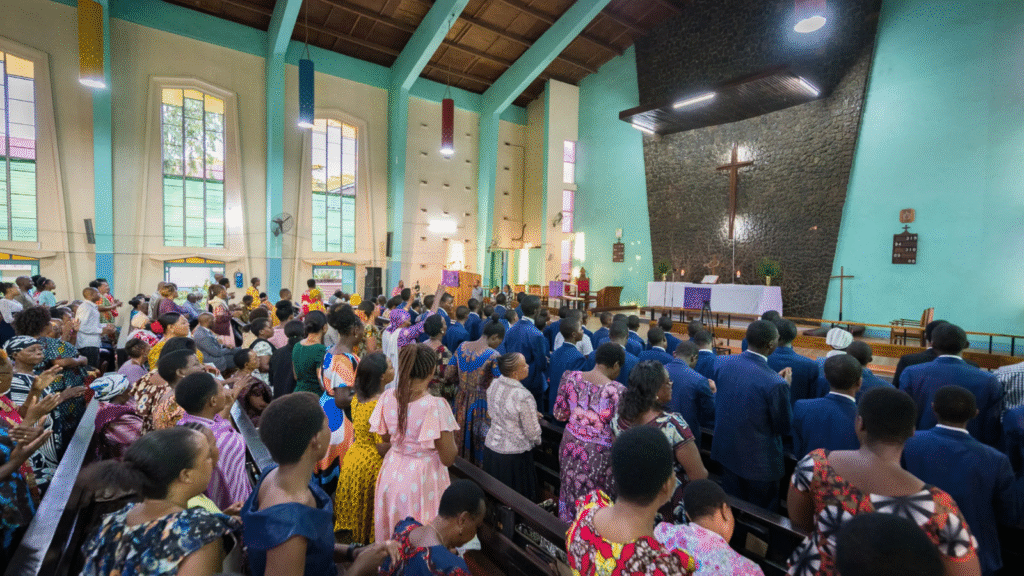
Institutions like the All-Africa Conference of Churches exemplify ecumenical collaboration across 43 countries, promoting unity, justice, peace, and human dignity. Initiatives such as the Eminent Persons Ecumenical Program for Peace in Africa and the African Faith Actors Network for Climate Justice bring Christian and Muslim leaders together to address social and environmental challenges.
While interfaith and ecumenical engagement is fragile—vulnerable to political manipulation and fear—it models a future of shared mission, not just theological dialogue.
Rediscovering Leadership
In many Global South churches, lay leaders carry much of congregational life, often because ordained pastors are few. Women and men lead prayers, organize communities, and sustain witness. Ministry is not reserved for clergy; every baptized believer is gifted and sent. Churches in the North are challenged to recognize and reactivate these gifts throughout the body.
These experiences remind us that the Global South is not an idealized “model church,” but a living, struggling, and faithful body of Christ. Its lessons—its gifts, its wounds, and its challenges—belong to the whole Church and offer guidance for the global community of believers today.
Implications for the Global Church
I often ask myself—and invite us all to ask—what does this pilgrim movement mean for the Church worldwide? The growth of Christianity in the Global South and concerns about its decline in the North are not something to observe from afar; it is a mirror in which the whole body of Christ is called to see itself anew. The witness coming from Africa, Asia, and Latin America—and yes, even from Europe and North America—challenges us to rethink what faithful theology, courageous leadership, and authentic mission look like in our own contexts. It reminds us that the vitality of the Church is never measured by geography, wealth, or power, but by how the gospel is received, confessed, lived, and carried by the Spirit.
At the same time, churches in the Global North face complex realities. Cultural shifts, secular pressures, and social fragmentation make faithful witness difficult. Yet these challenges are not only obstacles—they are invitations. They call churches in the North to reflect, adapt, and innovate in ways that can teach the wider Church about perseverance, creativity, and faithful engagement.
When approached with humility and curiosity, the relationship between rapidly growing churches and those navigating slower or more complex contexts becomes mutually enriching. Each context offers insights for the other: the courage and vitality of the growing churches, and the discernment and reflective practices developed in the North. By learning from one another, the whole body of Christ is strengthened and better equipped to live faithfully in a changing world.
Reshaping Theology and Leadership Formation
Theological thinking in the Global South is often formed not only in libraries but amid poverty, displacement, conflict, and interreligious tensions. This echoes Martin Luther’s experience during the 1527 plague in Wittenberg, when he emphasized that theology must be lived and practical—guiding God’s people through real struggles.
For seminaries, this calls for a vision of formation that prepares leaders who are theologically grounded, contextually aware, and courageous in mission. Pastors, teachers, and lay leaders need skills to navigate complexity, discern God’s work in diverse settings, and foster vibrant communities of discipleship.
New methodologies, especially technology, offer valuable tools. Online platforms and digital collaboration can share resources, support mutual learning, and strengthen networks across regions. The key is to remain locally relevant: formation must respond to the realities of each community while benefiting from global exchange. In this way, technology deepens theological reflection and equips leaders for faithful service in today’s world.
Redefining Mission
The old model of one-way sending—from Europe or North America to the rest of the world—no longer reflects the reality of God’s work. The Lutheran World Federation emphasizes that mission today is mutual and reciprocal. The North needs the South’s vitality, courage, and witness, while the South can draw on the North’s resources, scholarship, and historical experience. Mission is no longer about one giving and the other receiving; it is a shared journey of the one body of Christ, in which each member contributes gifts for the building up of the whole.
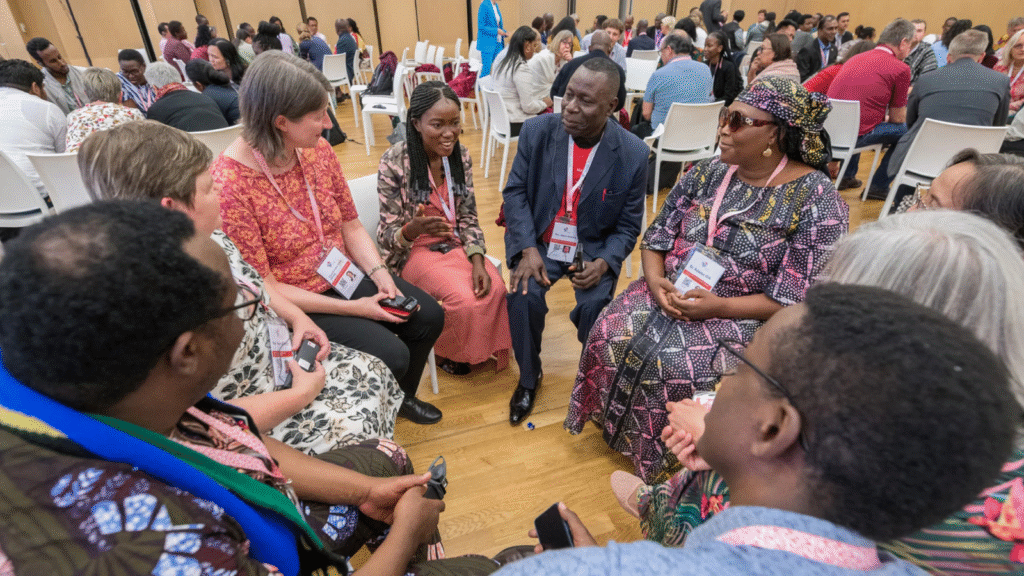
Since my visit here a week ago, I have heard more than a dozen people say, “It is time you send us missionaries.” This is easier said than done, and it is precisely the kind of question that pushes us out of our comfort zones—and into the reality of what mutual mission could look like. As a pre-emptive measure, I am curious to hear how Luther Seminary responds to this.
Ecumenical Implications
“To be Lutheran is to be ecumenical.” The growth of Christianity in the South is not simply a Lutheran story but a profoundly ecumenical one. Churches in Africa, Asia, and Latin America are interwoven through councils, alliances, and grassroots cooperation. The World Council of Churches notes how the vitality of the South is reshaping the ecumenical agenda toward justice, peace, and reconciliation. These collaborations are often grounded in simple acts of embracing one another despite complex theological differences.
This vision calls the global Church to renewed humility. No single tradition holds all the answers; each is a steward of gifts for the common good. The Spirit is calling the Church beyond competition into deeper communion. The rise of the South makes this unmistakably clear: despite its many complexities, the Church of the future will be ecumenical—or it will not be the Church at all.
A Call to Listen, Learn, and Equip Leaders
Learning is itself part of discipleship. The Spirit speaks not only through texts and teachers but also through the voices of fellow disciples around us. As we listen to some of the lessons from the Global South, we are invited to ask how they might shape our seminaries, our teaching, and our formation. How can we equip leaders—faculty, pastors, and students—to proclaim the gospel faithfully, engage their communities courageously, and lead with vision in a world marked by both suffering and hope?
Questions to Consider
To ground these reflections in our own experience, I invite you to turn to your colleagues in local ministry and discuss these two questions:
- Which lesson from the Global South most challenges your ministry context?
- What would theological formation (in your congregation, community, judicatory, or seminary) look like if we took these lessons seriously?
A Future Forged in Struggle and in Community
The future of the Church is forged in struggle, in communities where faith and life are inseparable, where young people dare to imagine something new, and where the Spirit moves in weakness rather than triumph. The Global South, with all its gifts and wounds, already shapes the global Church, calling the whole communion—North and South alike—to listen, learn, and walk more faithfully together. The question is not whether these voices will influence us, but whether we will allow them to reform us in Christ, for the sake of God’s mission in the world.
Resources
- Luther, Martin. Heidelberg Disputation (1518).
- Luther, Martin. To the Christian Nobility of the German Nation (1520).
- Luther, Martin. Small Catechism (1529).
- Lutheran World Federation. Assembly Message: Kraków, 2023. Geneva: LWF, 2023.
- Lutheran World Federation. Mission in Context: Transformation, Reconciliation, Empowerment. Geneva: LWF, 2004.
- World Council of Churches. World Christianity in the 21st Century: Perspectives from the Global South. Geneva: WCC, 2013.
- World Council of Churches. Together Towards Life: Mission and Evangelism in Changing Landscapes. Geneva: WCC, 2012.
- Pew Research Center. The Future of World Religions: Population Growth Projections, 2010–2050. Washington, DC: Pew Research Center, 2015.
- Pew Research Center. Religion in Latin America: Widespread Change in a Historically Catholic Region. Washington, DC: Pew Research Center, 2014.
